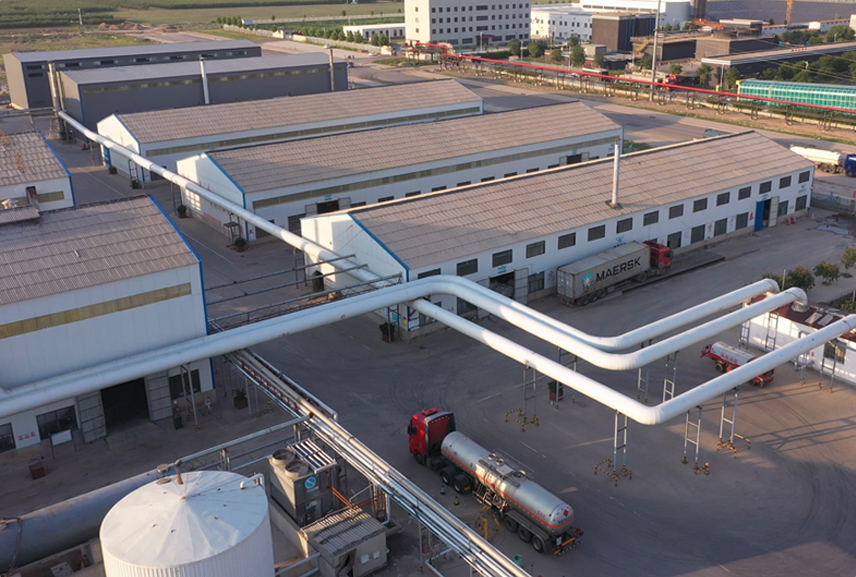HPMC's role in tile adhesives mainly includes improving water retention, enhancing bonding strength, improving construction performance, and providing good anti-slip properties.
HPMC (hydroxypropyl methylcellulose), as a high-quality viscosity-enhancing material, plays an important role in tile adhesives. By applying HPMC scientifically and rationally, the adhesion and durability of tile adhesives can be effectively improved, while improving construction performance and reducing production costs. In tile adhesives, HPMC's high water retention allows for no need to pre-soak or wet the tiles and substrate, significantly improving its bonding strength. In addition, HPMC also makes the slurry construction cycle long, fine and uniform, and easy to construct. At the same time, it has good anti-slip properties, protects the base material from mechanical damage, and avoids the negative impact of water penetration on the entire building.
These characteristics of HPMC are essential to improving the construction quality and service life of tile adhesives, making tile bonding more secure, reducing shedding and cracking caused by material drying, shrinkage or external forces, thereby ensuring the beauty and durability of tile paving.
| Item | Unit | Standard Specifications |
| Appearance | / | White powder,free flowing |
| Loss on drying | % | 4-6 |
| Residue | % | 3.5 |
| Methyl | % | 49-26 |
| Hydroxypropyl | % | 7-14 |
| Ph value(25C) | / | 6-8.5(neutral) |
| Gel temperature | ℃ | 60 degree/75 degree |
| degree of fineness | mesh | 100 mesh,>96%80 mesh,>100% |
| Apparent density | g/m3 | 0.4-0.6 |
| proportion | g/L | 420-520 |
| Surface Tension(2%solution) | dyn/cm | 42-56 |
| Water retention | % | ≥92 |
| Light Transmittance | % | 65-90 |
| Carbonization temperature | ℃ | 280-300 |
| Discoloration temperature | ℃ | 190-200 |
Related Products
HPMC (Hydroxypropyl Methyl Cellulose)
Better water retention and open time
Better strength development of the mortar
Improved workability
Increased adhesion to a variety of substrates
MHEC (Hydroxyethyl methyl cellulose)
High thickening efficiency and wide range of viscosity grades
Good compatibility
Excellent stability
Good protective colloid activity
RDP (Re-Dispersible Polymer Powder)
High flexibility, good film formation
High water resistance for increased open time
High hydrophobicity, ability to bridge cracks
Viscous texture and high workability
Related Application Categories
Daily Chemical Detergent Grade HPMC Cellulose
Daily chemical Detergent grade hydroxypropyl methyl cellulose (HPMC) is a synthetic high molecular polymer prepared by chemical modification with natural cellulose as raw material.
The most notable property of HPMC is its effect on the performance of hand sanitizers.
Building materials added with HPMC are easier to mix and use, improve the work efficiency of construction workers, extend the open time, improve the bonding strength, and form a smooth and delicate surface coating.
Wall putty, also known as putty coating, is a decorative and functional smoothing material used for indoor or outdoor wall construction.
Wall putty, also known as degreasing paint. This is a material used for preparing and smoothing walls before painting.
Anti-crack mortar is a mortar made by mixing anti-cracking agent, cement and sand with water in a certain proportion, which can meet certain deformation and remain crack-free.
FAQ
Regarding the relationship between viscosity and temperature in HPMC (HPMC viscosity), what should be noted in practical applications?
What are the differences between HPMC and MC?
What are the formulations for interior and exterior wall putty powder?
What is the application of HPMC in putty powder, and what causes the formation of bubbles in putty powder?


Get in Touch
Interested in how our HPMC can enhance your personal care formulations? Contact us to request a free sample and experience the superior quality of our cellulose ether products.
Related News and Blogs
24
Aug., 2024
Let's meet Indonesia Coatings Exhibition 2024
The 10th Paintistanbul & Turkcoat Fair will be held at the Istanbul Exhibition Center in Turkey from May 8th...
19
Nov., 2021
What Causes A Cracked Putty Layer?
The one-off scraping thickness of the putty is directly proportional to the curing shrinkage strength, which increases in proportion to the tendency of the putty to crack.
04
Nov., 2021
Whether you are carrying out small repairs or building walls, knowing how to mix the mortar needs to be precise. If the mortar is too dry, the blocks will not stick together properly. If it is too wet, flowing mortar can spill out of the joints, resulting in wasted time and materials for clean-up.
25
Oct., 2021
The Effect of Winter Construction Temperature on Tile Adhesives
As we all know, tile adhesive is generally made from cement and mixed with various additives. It is mixed with water at the construction site and then applied to the wall or floor.

Get in Touch
Interested in how our HPMC can enhance your personal care formulations? Contact us to request a free sample and experience the superior quality of our cellulose ether products.